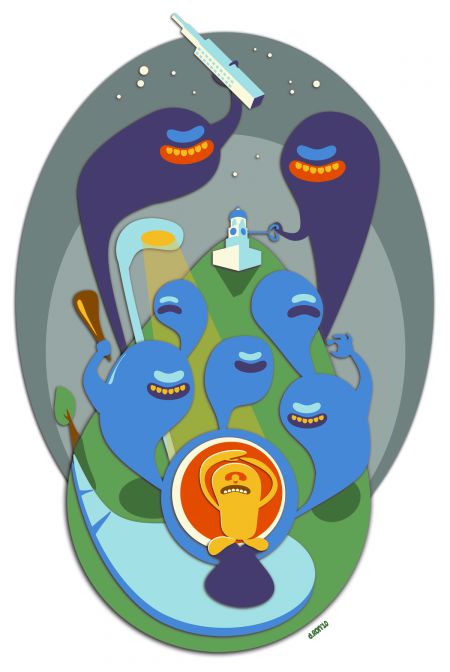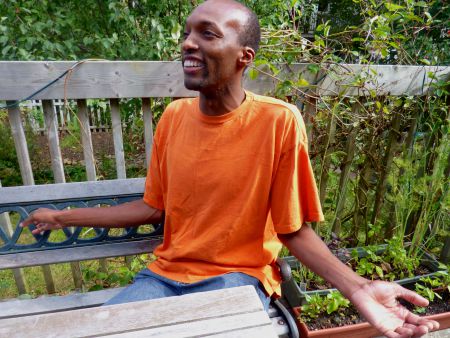Halifax doesn’t feel like a violent city. In fact, walking down North Street past jellybean-coloured houses and a view of the harbour, you can even hear birds chirping. But this is the same city—the same area of the same city—where seven violent attacks stunned Haligonians over Labour Day weekend. All were perpetrated by groups of youth, most of whom were allegedly young black men.
“Violence can happen anywhere, but not with the volume and intensity that Halifax has for a city its size,” says Jeff*, a recent victim who sustained severe injuries. Jeff will be unable to work for several months and says the recent attacks in Halifax have left him with conflicting emotions. “I love this city but don't want to live somewhere where I don't feel safe.”
Jeff and his partner were walking in his North End neighbourhood early one September evening when they were approached by a group of young people who asked them for a cigarette. Before he could respond, Jeff was severely beaten by between six and eight young men and women.
His experience is typical in what have become known as "swarmings" in Halifax. Swarmings are violent physical attacks perpetrated by large groups of people upon individuals or small groups. The attacks are unprovoked and random: the perpetrators and the victims are unknown to each other and, while robbery has sometimes been involved, it does not appear to be the main motivation for the attack.
This kind of violence is not new to the city. In 2006, after several swarmings and an unrelated deadly bar fight, Halifax Mayor Peter Kelly initiated a Roundtable on Violence in the Halifax Regional Municipality (HRM). Now, four years later, the roundtables are over and the report is written, but Halifax's streets are still not safe.
Halifax has the highest rates of violent crime in the country according to a 2005 Statistics Canada survey. "Violent crime" includes sexual and physical assault, homicides, robbery, and break-and-enters. Furthermore, the locally-commissioned roundtable report, written by criminologist Dan Clairmont, states that the HRM is tied with Regina and Saskatoon for the highest percentage of youth (ages 19-24) involved with violent crime in the country.
“The causes of youth crime are hard to pinpoint in terms of finding a single, all-encompassing source,” says Charys Payne, Dalhousie law student and youth worker. “However, one of the roots of crime is, of course, poverty. Furthermore, in the North End—a racialized community—this is coupled with the experience of racism.”
The Ryerson Anti-Racism Task Force defines racialization as “the social process by which certain groups of people are singled out for unequal treatment on the basis of race and other characteristics, whether real or imagined.” The Task Force also says that racialization is a historical process.
In Halifax, the roots of this process are clear.
According to the website of the 2006 Racism, Violence and Health Project undertaken by Dalhousie University’s Department of Social Work (of which Payne was a researcher), thousands of Blacks settled in Nova Scotia during the 18th, 19th and 20th centuries, and thousands more settled here after the American Revolution. They were promised land and freedom in exchange for fighting for Britain, but upon arrival were denied both land and equal rights.
In more recent history, the infamous destruction of the Black community of Africville in the late 1960s displaced citizens who were then relocated to the Uniacke Square public housing project in the North End of Halifax. Former Africville residents and their descendants, according to the Racism, Violence and Health Project website, still face serious socio-economic hardships, and many still live in public housing.
Payne was the Executive Director of Saint George’s YouthNet, a youth organization a few blocks from Uniacke Square, from 2007-08. YouthNet offers free morning, lunch, after-school and summer programs. Reflecting on the causes of violence in the North End, she says, “intergenerational poverty begets systemic violence.” Payne explains that poor, racialized youth “already face the strongly held stereotype that they are violent and angry so this behavior becomes a sort of armor which shields them from the pain of exclusion from middle class judgment.”
In short, for symptoms to improve, the core issues need to be addressed. From Payne’s perspective, “while the reality is sometimes bleak this does not mean that the situation cannot be resolved."
“It all comes back to issues that are unaddressed in our lives,” says Marshall Williams Jr., offering examples such as abuse, discrimination and lack of self-respect as roots of violent behaviour. Williams is a resident of Preston, the largest Indigenous Black community in Canada and member of the IMove (In My Own Voice) youth group, a media-based program for youth-at-risk. Unfortunately, young people aren’t getting together on the streets to talk about their issues, according to Williams. “They’re getting together and reflecting that back out.”
Twenty-nine year old Williams says more and better recreation facilities, community organizations, and an improved education system could give support to young people—especially to those who do not have their needs met within their homes. Unfortunately, he has seen the decline of these supports as he has gotten older, with fewer recreation opportunities available, and decreased youth involvement in community organizations.
According to Williams, “The people in the position to address these things are not addressing them.”
The Roundtable on Violence was intended to locate and target the underlying causes of Halifax’s crime and violence, but it is unclear if or how the recommendations have been implemented. Mayor Peter Kelly did not respond to calls for an interview.
Sarah MacLaren, Executive Director of Leave Out Violence (LOVE) Halifax, says the greatest disappointment regarding the roundtable report is that it was released just prior to the city’s 2006 budget, but appropriate funds were not earmarked to address the recommendations.
MacLaren also notes that when money is spent, it’s not necessarily spent well. As an example, she points to new recreation facilities in the HRM: while some youth will benefit from these facilities, she says that those who can’t afford new sneakers or sports equipment, or who don’t have transportation to the recreation centres, are the ones that could really use them.
There is also the question of the education system. Rocking back in her chair behind a desk full of papers, MacLaren says she does not want to put all the responsibility on the Department of Education, but “in terms of access to youth over years and hours, they have the most. Youth spend a lot of time at school.” Unlike other provinces that have publicly funded alternative schools, Nova Scotia lacks educational infrastructure for those students whose needs lie beyond the traditional classroom, or who have unique learning needs.
MacLaren asks, “Where’s the formal curriculum around life skills? Where are the alternative schools?” She sees schools as a logical locale for prevention-based programming, but does not believe that that’s the only way to engage disenfranchized youth. Most of the young people MacLaren works with have already been implicated in violence and, she says, “I have seen youth completely turn around when given the support they need.”
LOVE, an organization that helps youth overcome the challenge of violence in their lives, is only one of the places young people end up. Many youth who have committed a violent crime end up negotiating the Youth Criminal Justice System, which MacLaren sees as being a prolonged and sometimes unhelpful process.
One of the recommendations of the roundtable report is a stronger focus on in-depth restorative justice programs through the Department of Justice and the Community Justice Society (CJS). In practice, restorative justice involves both those who have been involved in and affected by the crime—i.e.; the perpetrators of the crime and the victim—in a co-operative process that determines the outcome for both parties, with the intent to seek true justice.
"Enforcement and accountability are necessary, but so are social development strategies that provide alternatives and opportunities,” says Yvonne Atwell, Executive Director of CJS. While CJS is a program of the provincial government, the roundtable report recommends that the municipality’s role in furthering restorative justice in Halifax “would be an advocacy [role] vis-a-vis the provincial government.”
So far, “we haven’t seen anything from the city whatsoever,” says Atwell.
Williams believes that if the money spent to keep people in prison were redirected to community programs and supports, Halifax would see fewer people locked up. He says it costs around $125,000 to keep someone in prison for a year—which, for five people, would be over $600,000. "I guarantee,” Williams says, "if you put half that money into community programs and supports, four out of those five youth aren’t going to be in the criminal system anymore.”
For Jeff, whose life has been turned upside-down by the attack, “the best type of punishment for this would be to give back to the victim.”
He acknowledged his anger in a recent email exchange, especially given he is no longer able to do the work he loves. At the same time, he says he’d "like to have the opportunity to explain to [his attackers] and show them how I live and work in the hope that maybe it would restore what little empathy they have towards other people.”
As complicated as it may be for the victim, Williams sees this kind of empathy as a two-way street. “It’s really hard to hate somebody when you know what they’ve been through,” he says.
Angela Day is a writer, educator, urban gardener and community organizer with roots in Halifax. She currently coordinates programs for young women across HRM.
* The victim’s name has been changed to protect his or her anonymity.




